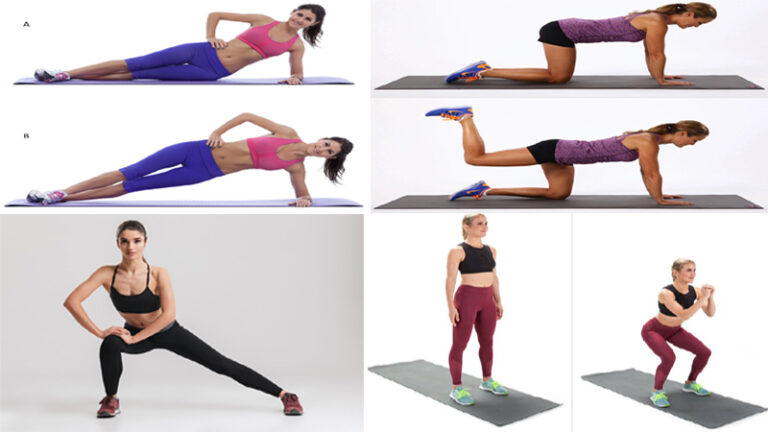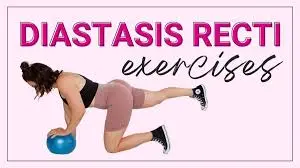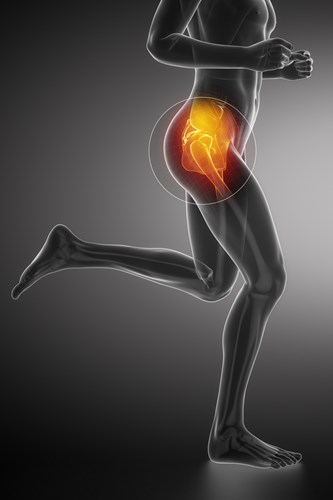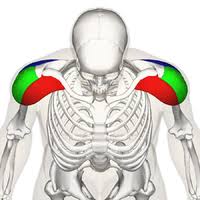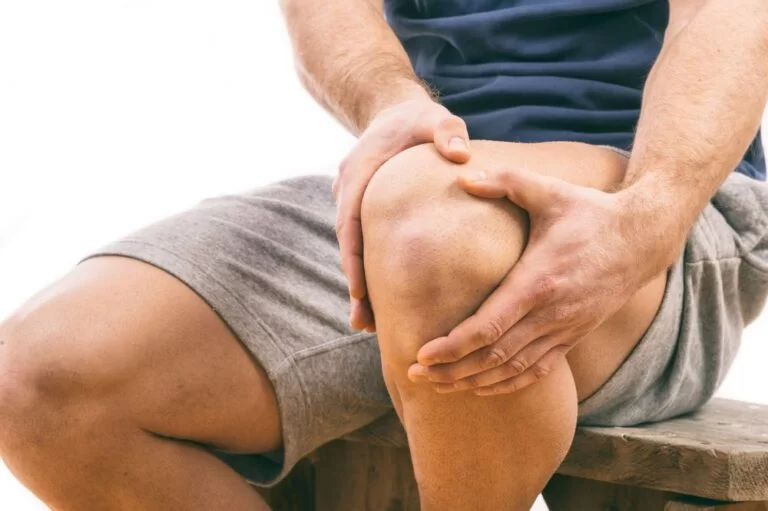9 Best Exercises For Lateral Pelvic Tilt
Introduction
Lateral pelvic tilt, often referred to as hip hike or hip drop, is a common postural imbalance characterized by one side of the pelvis being higher or lower than the other. This condition can lead to discomfort, pain, and decreased mobility if left unaddressed.
While there are various causes of lateral pelvic tilt, including muscle imbalances, tightness, and asymmetrical movement patterns, incorporating specific exercises into your routine can help correct this issue.
In this guide, we will explore some of the best exercises to address lateral pelvic tilt, focusing on strengthening and stretching key muscle groups involved in maintaining proper pelvic alignment.
These exercises target the muscles of the hips, pelvis, core, and lower back to promote balance and stability, ultimately aiding in the correction of lateral pelvic tilt and improving overall posture and function.
- A lateral pelvic tilt may have structural, functional, or both types of reasons. There has been a great deal of clinical uncertainty and improper treatment of issues as a result of the inability to distinguish between the structural and functional causes of a lateral pelvic tilt.
- In cases when there is unilateral hypertonicity or spasm in the lower back muscles, the pelvis is prone to tilt laterally.
- This is especially noticeable when the quadratus lumborum (QL) is hypertonic. because the lower spine’s primary lateral flexor is located there.
- Since the QL muscle is a postural muscle of the trunk, it is very vulnerable to the condition.
- The pelvis may tend to pull higher on the side with more QL tension if there is an obvious distinction in the tightness on either side.
- The tightness could be the consequence of a serious case of back pain or the result of long-term adoption of incorrect regular posture habits.
- Placing your pelvis parallel to your shoulders and the ground is the ideal position. One hip being higher than the other is known as a lateral pelvic tilt. This may result in some muscles becoming stiff and others becoming weak.
Which indications of lateral pelvic tilt are present?
A lateral pelvic tilt can result in problems such as:
- Hip and backache
- An unsteady Walk
- Walk improper alignment of the spine
- Tense muscles in the thighs and pelvis.
- weak abdominal and gluteus maximus muscles.
- Poor posture is characterized by a bulging belly and a curved lower spine.
- Uneven Hips & Step: Having an uneven walk or gait because one hip is lowered than the other is the most noticeable sign of a lateral pelvic tilt.
- Unequal Shoulder Heights: The shoulder on one side will typically be lower than the other due to the higher hip.
- Evident Leg Length inequality: Leg length inequality is a condition that is sometimes mistaken for a lateral pelvic tilt.
- A person with a lateral pelvic tilt may perceive a difference in length between their legs or a difference in width between them.
- Leg Internal Rotation: A lateral pelvic tilt typically causes the leg bones to spin internally.
- It should not be discounted that the lateral pelvic tilt could possibly be caused by the internal rotation of the leg rather than being the consequence of it.
- If that’s the reason, then the foot is where the issue begins. One foot will usually be inclined, or the ankle may slide inward; this can result in a collapsed arch or a flat foot. The hip will drop and the shin and femur will twist inward when one foot becomes bent.
- Other Symptoms: Severe or long-term cases of left or right pelvic tilt can result in low back pain and muscular tightness, whereas mild to moderate cases typically do not show any symptoms at all.
- A lateral pelvic tilt can result in more serious health problems if left untreated, such as:
- Disc degeneration: Because of the lumbothoracic spine’s deformation, lateral pelvic tilt may result in disc degeneration.
- According to one study, regardless of age or gender, people with a high degree of pelvic tilt also had a higher prevalence of disc degeneration within the L4 to L5 portion of the lumbar spine.
- Pain in the sacroiliac joint – Lateral pelvic tilt may cause the sacrum to be positioned asymmetrically around the ilia, or “wings,” of the pelvic girdle. The asymmetry could cause pain in the sacroiliac joint.
How can one tell if they have a lateral tilt in their pelvis?
To determine whether your pelvis is Unbalanced:
Faced towards a large mirror, stand with your feet shoulder-width apart.
Place the heels of your hands on the front of your hip bones, the anterior superior iliac spine.
Imagine a horizontal line between your hands, or hold a piece of string stretched between both of them.
The line that connects your hands should be parallel to the ground rather than sloping up or down. You may have a pelvic tilt to one side if the line is not parallel.
Expert opinions
- If you’re not sure if you have a lateral pelvic tilt or if you don’t feel comfortable diagnosing yourself, you should have a licensed physical therapist evaluate you.
- It is noteworthy that there are two types of lateral pelvic tilts: “structural” and “functional.” For this reason, you must undergo evaluation from a physical therapist in order to investigate the reason behind your lateral tilt.
- A leg length difference, one leg being longer than the other, or a structural condition can result in a structural pelvic tilt.
- Muscle imbalance or compensation to reduce pain is typically the cause of a functional pelvic tilt.
9 Best Exercises For Lateral Pelvic Tilt
These exercises can be used at home to help deal with lateral pelvic tilts.
Pelvic Tilts
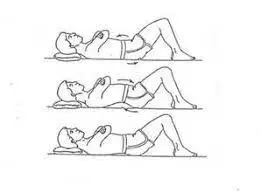
Exercises involving pelvic tilt are essential for preserving ideal pelvic alignment, correcting muscular imbalances, and enhancing general stability.
Steps To Follow:
- Lying on your back, place your feet flat on the floor and bend your knees.
- As you take a breath, slowly tilt your pelvis backward, pressing your lower back firmly into the ground.
- Let out a breath and gently arch your lower back by tilting your pelvis forward.
- Repeat ten to fifteen times, paying attention to deliberate motions.
Reverse leg raises
Your gluteus muscles will get stronger and your hip movement will increase with this workout. It may be difficult at first to perform this exercise since the muscles in the hip that sit lower are likely weaker.

Steps To Follow:
- Lie on your stomach with your knees flat on the floor and your hands supporting your forehead.
- Raise one leg while keeping your knees straight and your gluteal muscles tight.
- Keep the other hip from rising off the ground.
- After two to five seconds of holding still, lower your leg.
- Perform 12 repetitions.
- Change your legs.
When lifting your leg, avoid arching your back since this may result in back pain. During this exercise, make sure not to arch too much by contracting your abdominal muscles.
Reverse standing leg raises
Your gluteus muscles will get stronger from this workout, and it will also help with balance.
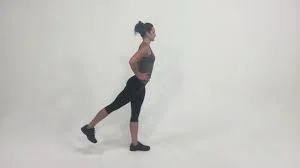
Steps To Follow:
- For balance, grab onto a wall or the back of a chair.
- Tighten your core muscles, maintain a straight posture, and raise one leg off the ground behind you.
- As high as is comfortable for you, raise your leg straight behind you without hunching your back.
- When your toe touches the floor, gradually lower your leg.
- Perform 12 rep.
- Repeat after switching legs.
Use low, controlled movements to complete this exercise while maintaining a straight spine. Avoid swinging your leg as this may result in back pain.
Hip hike
Enhancing hip and core strength as well as pelvic posture is possible with this exercise.
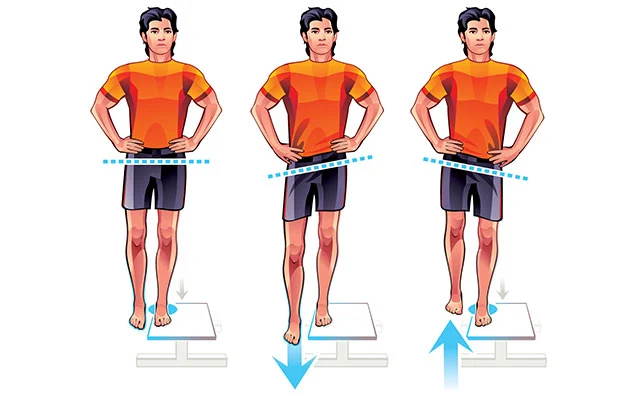
Steps To Follow:
- Put your weight on the leg say, the side of a small step or box where your pelvis is higher. If you need to, hold on to anything.
- Raise the opposing pelvis as high as possible by applying pressure with your foot while keeping your spine straight.
- Return to the starting position after 10 seconds of holding this.
- Ten to fifteen repetitions should be done, or until the leg you are standing on grows tired.
Side Stretch While Seated
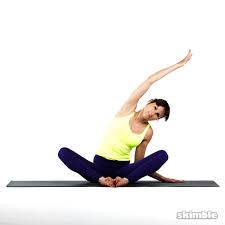
Steps To Follow:
- Spread your legs wide and take a seat on the floor.
- To create a lateral stretch along your body,
- raise one arm overhead and extend it towards the other side.
- After 30 seconds of holding, swap sides.
- On each side, repeat three times.
Squats Using Body Weight
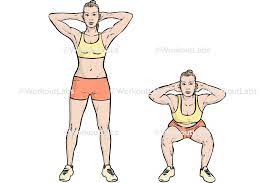
Steps To Follow:
- Make sure your knees remain in line with your ankles while you squat properly.
- Pay attention to keeping your balance and using the muscles surrounding your hips.
- Do three sets of twelve to fifteen reps.
IT Band Foam Rolling
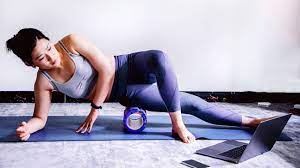
steps to follow:
- To begin, place the foam roller slightly below your hip bone while resting on your side.
- With your foot flat on the floor, your upper leg should be bent and your lower leg should be straight.
- With your body weight supported by your forearm and the foam roller, gently lower your upper leg onto it.
- By adjusting the roller up or down, you can discover a region that is tender but not painful and change your position accordingly.
- Roll slowly from your hip to slightly above your knee, covering the IT band. As you roll, take a deep breath and let your muscles relax.
- If you come across a really sore area, pause and stay there for a few minutes or even longer. If necessary, use your other leg to provide light pressure.
- Roll each leg for another two to three minutes.
- Continue on the opposite side.
Clamshell
Your gluteus muscles will get stronger and your hip range of motion will be enhanced with this exercise.

Steps To Follow:
- Assume a lateral position, supporting your head with your lower arm while bending both legs to a 90-degree angle.
- Roll your top hip gently forward towards the ground before you begin, and make sure your spine is secure and relaxed.
- Keep your gait straight and raise your upper leg.
- Hold for five seconds, then flex your knee down.
- Perform 12 repetitions.
- Change positions.
Take care not to rotate your spine when performing this exercise. Back pain and more stress may result from this. Try for thoughtful, brief motions.
You can extend or draw your legs closer to your body. A small movement of your body will help you to engage every muscle in that area.
Hip adduction
The connective tissue muscles, which are found inside your thighs, will get stronger with this workout.
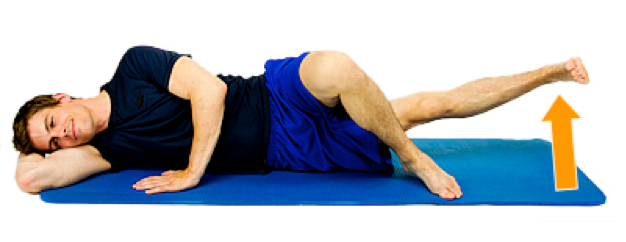
Steps To Follow:
- Stretching out both legs, lie on one side.
- Raise your head and use your lower arm to do so.
- With your top leg’s foot on the floor in front of your bottom leg’s knee, cross your top leg over your bottom leg.
- Keep your leg straight and raise your lower leg as high as feels comfortable.
- After five seconds of holding still, lower your leg.
- Perform 12 iterations.
- Change positions.
Quadratus Lumborum
- You may have a client with a lateral pelvic tilt if you have ever heard a client describe having one leg shorter than the other.
- One leg may appear shorter than the other due to a lateral pelvic tilt. The primary muscle responsible for producing and reversing a lateral pelvic tilt is often the quadratus lumborum.
- Located deep within the abdominal wall, the quadratus lumborum muscle is attached to the lumbar spine as well as the pelvis.
- This muscle’s primary function is lateral bending or side-to-side bending. This aids in pelvic stabilization.
- A lateral pelvic tilt is produced when this muscle on one side of the spine becomes more taut, pulling the pelvis up on the opposite side.
- You must first comprehend the correct pelvic position in order to prevent pelvic tilt in your clients.
- When evaluating your clients, take the initiative to determine whether they exhibit symptoms of or have a pelvic tilt.
- Knowing whether a tilt is present can help you as a fitness trainer to recommend an appropriate exercise program that includes the appropriate correction exercises.
- Verify that you are not raising your leg while bending your hips.
The importance of stretching
Underworked muscles will get stronger with these exercises. You will also need to stretch the overworked muscles in order to maintain adequate balance.
Conclusion
Pain and discomfort may result from a lateral pelvic tilt, but regular exercise might help you address the issue. Utilize the mirror test to monitor your development. Even after your pelvis has adjusted, continue with these exercises. This will stop the illness from getting worse.
At last, Things like the conditions causes, signs, and possible remedies. But generally speaking, treating lateral pelvic tilt is essential for preserving physical health and averting related problems.
It is crucial to get professional advice from healthcare providers, such as physical therapists or orthopedic specialists, regardless of the cause of muscle imbalances, postural habits, or structural abnormalities.
In general, better posture, a decreased chance of related discomfort or injuries, and better overall musculoskeletal health can all be attained by being aware of and treating lateral pelvic tilt. Healthcare experts should always be consulted for specific recommendations and directions based on each case.
FAQs
Can lateral pelvic tilt be corrected?
These may include having the spinal abnormality surgically corrected, using braces or corsets, or, in more severe situations, both. When lateral pelvic tilts are functional problems brought on by muscular tension, physical therapy, stretching, and occasionally muscle relaxants are utilized as traditional treatments.
What kind of exercise is suitable for treating lateral pelvic tilt?
Put your weight on the leg say, the side of a small step or box where your pelvis is higher. If necessary, grasp onto anything. Raise the opposing pelvis as high as possible by applying pressure with your foot while keeping your spine straight. Return to the starting position after 10 seconds of holding this.
How can I correct lateral pelvic tilt while I sleep?
If you sleep on your back, the simplest trick to attempt is to put a pillow or blanket under your knees. This realigns your anteriorly tilted pelvis to a neutral posture, which relaxes and lengthens the muscles in your lower back.
What is the appearance of a lateral pelvic tilt?
This “habit” is what causes one side to appear taller than the other when one is lateralized. Because their pelvis may feel twisted in addition to one side being higher, some persons will refer to it as a “twisted pelvis” or “rotated pelvis.”
References
- Ginta, D. (2021, June 8). 5 Lateral Pelvic Tilt Exercises. Healthline. https://www.healthline.com/health/fitness-and-exercise/lateral-pelvic-tilt-exercise
- Pelvic Tilt: What Is It and How Do You Correct It? | ISSA. (n.d.). https://www.issaonline.com/blog/post/pelvic-tilt-what-is-it-and-how-do-you-correct-it



